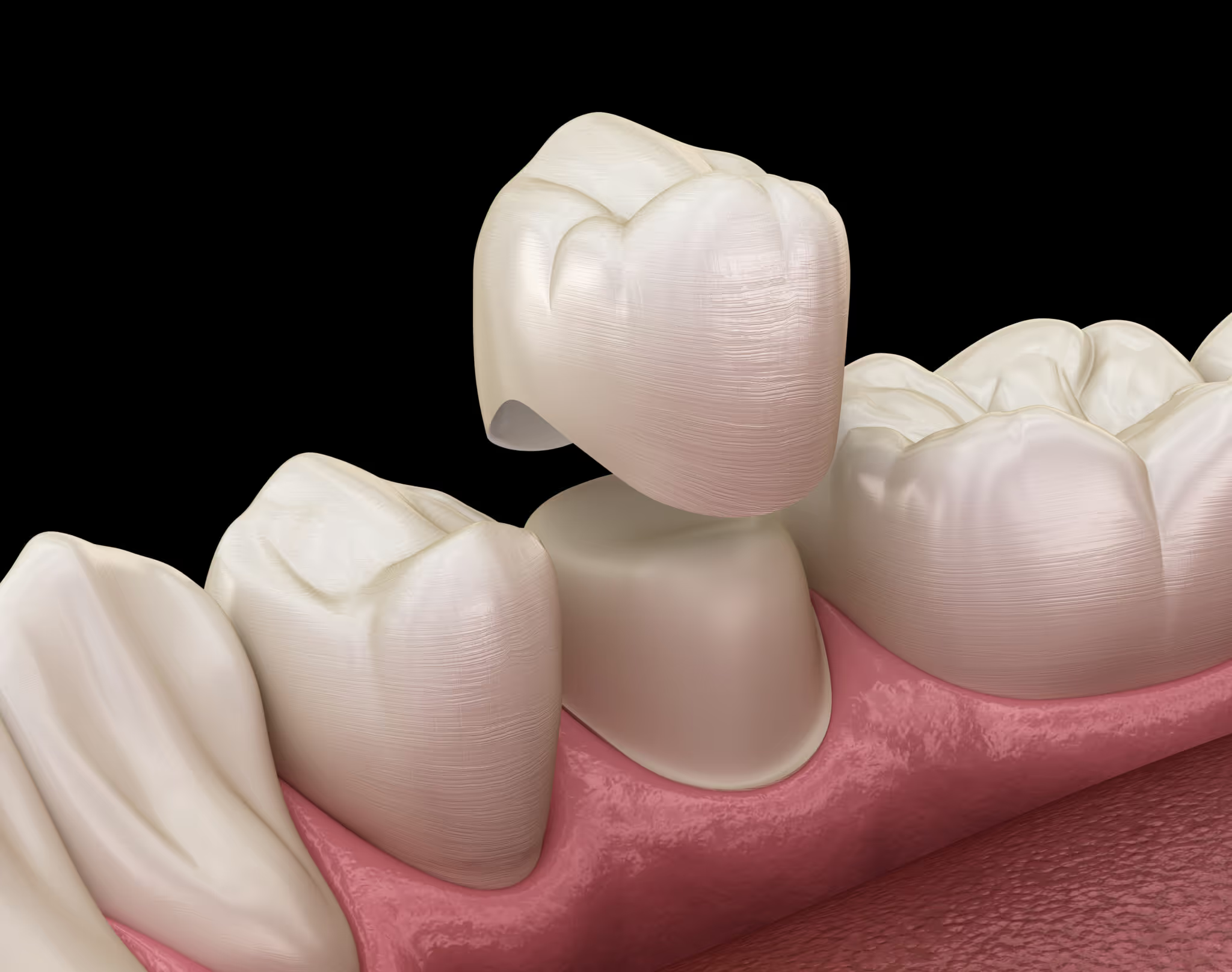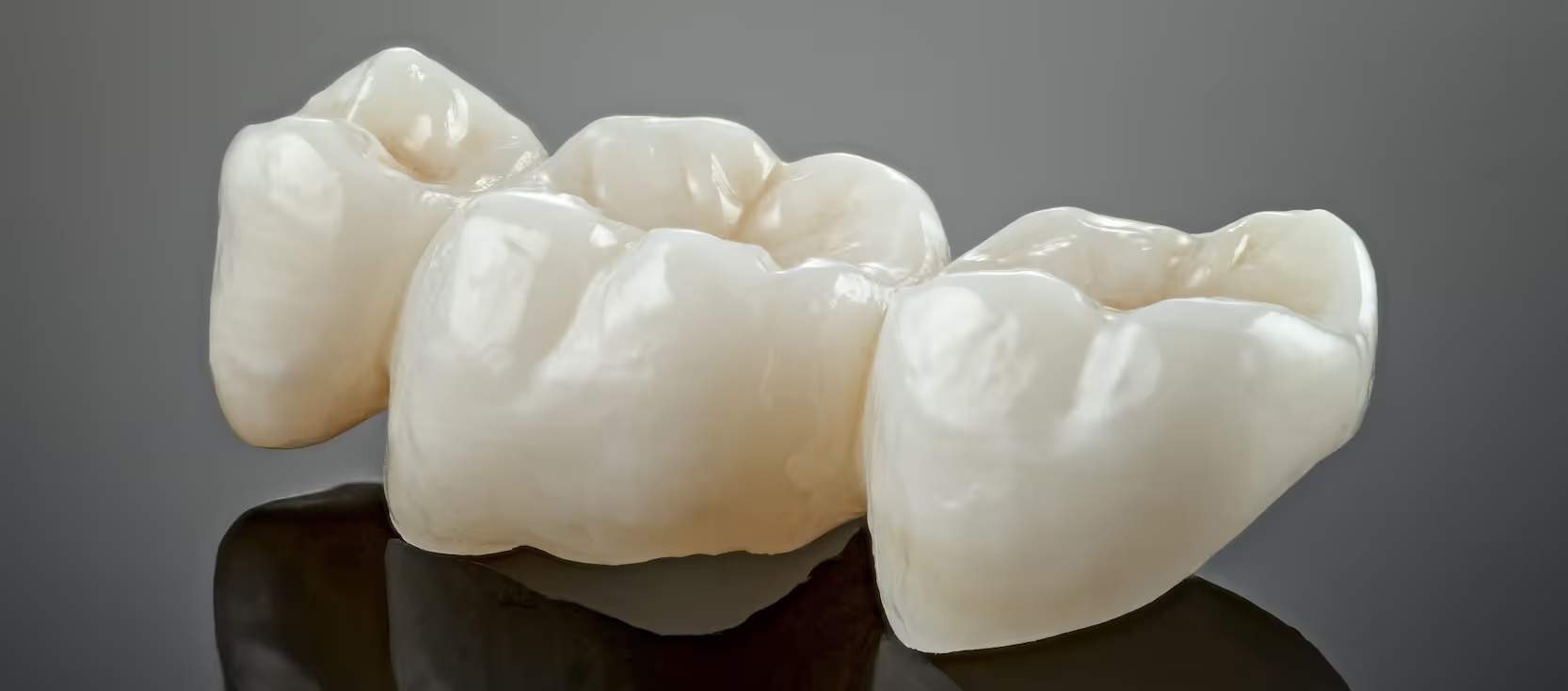Crowns and Bridges
Teeth that are cracked, worn, heavily filled, or missing altogether don’t just affect your smile—they affect your bite, comfort, and long-term oral health. At Riseley Street Dental, we use high-quality ceramic crowns and dental bridges to restore strength, function, and natural appearance—without compromising on aesthetics or longevity.

Restore Damaged Teeth with Precision and Strength
Teeth that are cracked, worn, heavily filled, or missing altogether don’t just affect your smile—they affect your bite, comfort, and long-term oral health. At Riseley Street Dental, we use high-quality ceramic crowns and dental bridges to restore strength, function, and natural appearance—without compromising on aesthetics or longevity.
With the help of CEREC® same-day technology and digital planning, we can often complete your crown in a single visit with no temporary, no second appointment, and no messy impressions.
What Is a Dental Crown?

A crown is a custom-made ceramic restoration that covers the entire surface of a tooth. It’s used to:
- Strengthen teeth that are cracked, worn, or root canal treated
- Restore teeth with large or failing fillings
- Improve the shape or colour of a tooth
- Protect a tooth at risk of fracture
What Is a Dental Bridge?

A bridge replaces one or more missing teeth by anchoring to the healthy teeth on either side. It’s a fixed, non-removable option that restores both appearance and function without the need for a removable denture.
Bridges can be made from tooth-coloured ceramic and designed to blend seamlessly with your natural smile.
Our Approach: Digitally Planned, Precisely Made
We use 3Shape TRIOS® scanning and CEREC® CAD/CAM milling to design and manufacture your crown or bridge with extreme accuracy—almost always on the same day. This allows us to:
- Avoid messy impressions
- Deliver faster, more comfortable treatment
- Ensure a precise fit and natural look
- Preserve more of your natural tooth structure
- Provide durable, long-lasting results
Ceramic vs Gold Crowns: What’s the Difference?
While ceramic crowns are the most commonly used today—thanks to their natural appearance and strength—gold crowns still hold an important place in modern dentistry, particularly in certain back teeth.
Ceramic Crowns
- Tooth-coloured, blends with natural teeth
- Excellent strength, suitable for front and back teeth
- Typically last 10–15+ years with proper care
- Requires more tooth reduction
- Very good biocompatibility
Gold Crowns
- Metallic appearance, visible when smiling
- Wears and adapts with the bite, ideal for heavy grinders
- Extremely durable—often 20+ years
- Requires less removal of natural tooth structure
- Very biocompatible and gentle on opposing teeth
Let's take care of your smile, the right way.
Experience personalised care, a calming atmosphere, and a genuine commitment to doing good dentistry. Start your journey with a team that focuses on the details that truly matter.
Commonly asked questions about our practice
Here are some common questions we get asked, along with clear, straightforward answers
Yes, we can organise payment plans through trusted third-party providers. Let us know if you'd like to spread out your treatment costs—we’ll talk you through what’s possible without any pressure.
Yes! We take a thoughtful and calm approach to care and will always go at your pace. We also offer sedation options for more complex or lengthy procedures. If you’re nervous, feel free to let us know ahead of time so we can help make the visit more comfortable.
We focus on detail-oriented, high-quality care designed with longevity in mind. Each treatment is approached with careful planning and clinical consideration, with the aim of achieving results that are both functional and long-lasting. We take the time to listen, collaborate, and tailor care to each person’s needs—so patients feel informed, confident, and well-supported at every step.
Yes, you’re welcome to request a specific clinician when booking.
Yes, we have parking available on-site. We’re also accessible by public transport.
Let's take care of your smile, the right way.
Experience personalised care, a calming atmosphere, and a genuine passion for detail. Start your journey with a team that focuses on what truly matters.